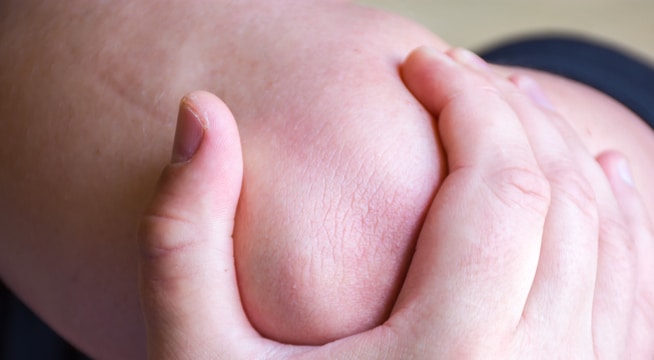
If you play any sports, enjoy exercising regularly, or have to do heavy lifting regularly at work, you’re likely very familiar with occasional muscle soreness. You know it comes with the territory, and you’ve likely gotten adept at home remedies to alleviate discomfort.
But what happens when you feel like you’re actually injured? Could it be a rupture? Could it be a tear? What’s the difference between both terms anyway?
Anatomy 101
In order to understand these types of injuries, it helps to have a basic understanding of human anatomy. When speaking about ruptures or tears, the injured body part could refer to either a muscle or a tendon.
A muscle is soft tissue that allows humans to contract and expand different body parts. They allow us to do basic movements, such as getting up, walking, and reaching for objects. They are also essential to maintain a good posture and to provide stability to the joints.
Tendons are flexible fibers that connect our muscles to our bones.
Is it a Rupture or a Tear?
Getting straight to the point: A rupture and a tear are the same thing. When a person suffers from a cut to either a muscle or ligament, they have either ruptured or torn the injured body part.
This type of injury is the result of a sudden body movement.
Symptoms of a Ruptured Muscle or Ligament
Signs of a ruptured muscle or ligament include:
- A popping sound
- Sharp pain
- Swelling
- Muscle spasms
- An inability to carry your bodyweight if the injury is to a lower limb
- If the injury is to a joint, the joint feels loose or unstable
Types of Muscle Tears
There are also different types of tears, depending on the severity of the injury.
Grade I: This type of injury feels mild, and the injured muscle still has most of its regular strength.
Grade II: A grade II injury is often accompanied by swelling and weakness of the injured muscle or ligament.
Grade III: This type of injury occurs when the muscle or ligament is completely ruptured. As a result, the person will experience a full loss of muscle or tendon function.
If the injury is Grade I or II, simple home remedies, such as the RICE Method (rest, icing, compression, and elevation) will help alleviate pain and reduce swelling. A Grade III injury may require surgery as well as physical therapy to slowly regain mobility.
It’s important to keep in mind that sometimes, a person may feel pain due to inflammation or irritation of a tendon (also known as tendinitis). This is a result of overuse. While painful, it’s not a tear.
Common Activities That Cause a Muscle or Tendon Tear
Most sporting activities may cause a muscle or tendon to tear. The movements that are most likely to cause this type of injury include:
- Sudden pivots
- Quick side to side movements
- Running with the wrong type of shoes for your gait
- Trunk rotation
- Soccer, swimming, or golfing without an adequate warm-up
- Falling and landing on the knees
Most Common Types of Muscle or Tendon Tears
The human body has over 600 muscles. This means that there are plenty of body parts that could experience a muscle rupture or tear. However, the most common types of muscle or tendon tears are the following:
- ACL Tears
- MCL Tears
- Achilles Tendon
- Pulled Groin
- Rotator Cuff
- Biceps
- Quadriceps
Muscle Injury Healing Time
Healing time will depend on the type of injury. If it’s a Grade I trauma, the person will likely heal within one or two weeks. Grade II injuries can take up to two months to heal, while Grade III injuries will require surgery and may take several months before the patient is able to return to their physical activity of choice.
Muscle Tear Prevention
Preventing muscle tears requires easing into activity. Always warm up adequately. If you are into sports, do dynamic stretching prior to working out. If you have to do heavy lifting, make sure to use the proper posture to do so.
In addition, it’s important to ease into more intense workouts. No matter how enthusiastic you may be about a sport or exercise program, increase intensity and duration gradually. Strength training and maintaining a healthy body weight are also important to reduce stress in your muscles and joints.
24-Hour Emergency Room Services in Colorado Springs and Texas
If are experiencing muscular pain and suspect you may have a rupture or a tear, let us help you. If you have questions or need immediate treatment, your nearest Complete Care location is ready to help, no matter the time of day or night. We offer a variety of services to help you and your family in your time of need. No appointments are necessary.
Find the Complete Care location nearest you.
